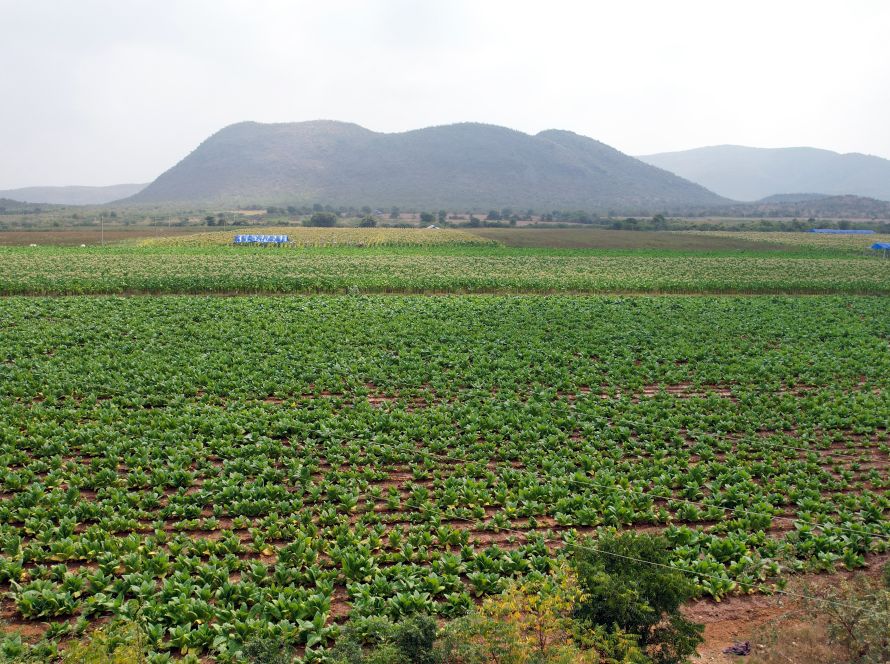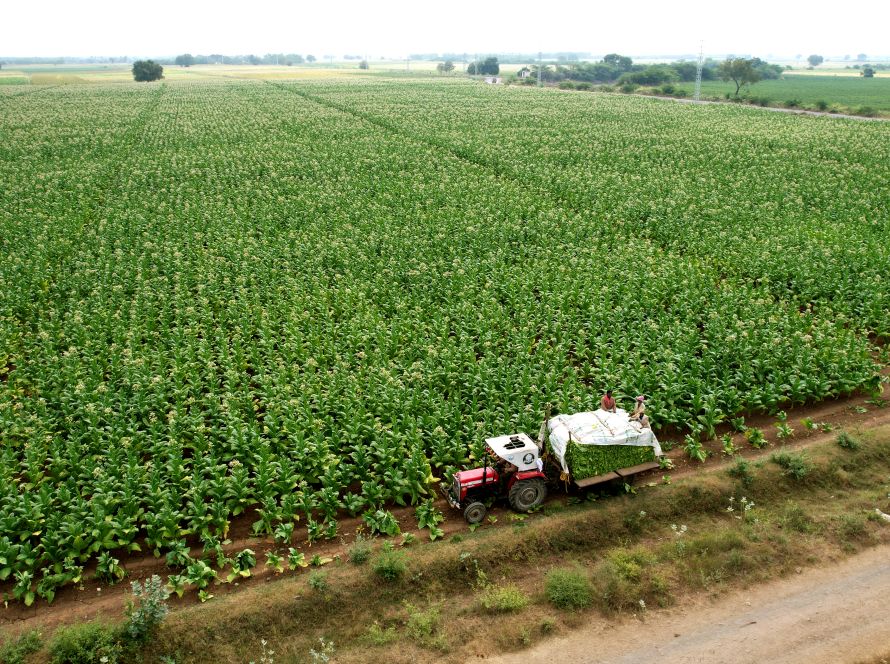Introduction
Agriculture is responsible for approximately 22% of global greenhouse gas emissions, making it one of the most carbon-intensive sectors worldwide. For agri-businesses, this is only a part of a broader emissions footprint. Their carbon exposure begins upstream not just with on-farm activities but also with associated emissions like input transportation. This continues through emissions from direct operations and extends downstream to warehousing, logistics, and international shipping. Each phase contributes to carbon exposure that is shared across operational and third-party networks. Grasping these interdependencies is essential, as they signify some of the most significant and challenging-to-quantify elements influencing an agricultural business’s overall environmental impact.
For the majority of agri-businesses, Scope 3 emissions constitute the most significant portion of their carbon footprint. However, these emissions are also the most challenging to control due to fragmented data, sourcing from smallholders, and varying practices across different growing regions. As the focus transitions from voluntary disclosures to reliable carbon accounting, businesses are now required to weave decarbonization into the very fabric of their upstream, downstream supply chain and operations directly.
Emissions Landscape Across Agri-Business Operations
A decarbonization strategy in agri-business encompasses various operational domains, ranging from agricultural production to post-harvest processing and transportation. Emissions in these sectors differ in their origin, type, and traceability; however, they all play a role in the overall footprint of an agri-business supply chain.
Agricultural production is acknowledged as one of the most significant contributors to greenhouse gas emissions within global food systems. Nitrous oxide (N₂O) is a major emission from this sector and is mainly linked to the use of nitrogen-based fertilizers. As reported by the FAO, N₂O emissions represent almost 38% of direct agricultural emissions worldwide, with soil management practices—such as the application of fertilizers, tillage, and residue management—being crucial in their production. [https://openknowledge.fao.org/server/api/core/bitstreams/ffb21ed0-05dd-46b1-b16c-50c9d47a6676/content]
The application of synthetic fertilizers continues to be prevalent, with their emission characteristics differing based on the methods of application, the amount used, and the conditions of the soil. Additionally, tillage and soil disruption can modify the levels of soil organic carbon, which in turn influences the potential for carbon sequestration. Data on emissions from agricultural systems reveal considerable variability across regions and seasons, influenced by factors such as rainfall, soil type, and the intensity of farming. [https://www.mdpi.com/2073-4395/13/12/3084#:~:text=The%20CO2%20emissions%20under,2%20emissions%20in%20this%20period.]
Livestock systems play a significant role in agricultural methane emissions, mainly due to enteric fermentation and the decomposition of manure. According to the Global Methane Assessment conducted by UNEP in 2021, emissions from livestock represent approximately 32% of the total anthropogenic methane emissions. The level of emissions varies depending on the species, the composition of feed, and the methods used for manure management. In integrated farming systems, where both crop and livestock operations coexist, indirect emissions resulting from feed production and the application of manure introduce additional complexity to the accounting of the supply chain. [https://www.unep.org/news-and-stories/story/methane-emissions-are-driving-climate-change-heres-how-reduce-them#:~:text=Livestock%20emissions%20%E2%80%93%20from%20manure%20and,keeping%20began%20in%20the%201980s.]
Processing facilities generate emissions as a result of energy usage, which is generally classified as Scope 2. Facilities that rely on grid electricity sourced from fossil fuels tend to have greater indirect emissions for each product unit. The selection of energy sources, whether it be diesel, coal, solar, or biogas, plays a crucial role in determining emission intensity. Furthermore, energy audits performed by industrial monitoring initiatives have revealed that refrigeration, drying systems, and mechanical sorting are significant power consumers within agricultural processing facilities. [https://www.fao.org/4/t0522e/T0522E08.htm#:~:text=Discontinuous%20dryers%20generally%20have%20thermal%20consumption%20rates,to%20give%20the%20rate%20of%20thermal%20consumption.]
Transportation and distribution play a role in emissions due to fuel consumption, distance of routes, and type of vehicles utilized. Agricultural exports frequently necessitate long-distance trucking, transportation over land to ports, and sea freight. Emission intensity fluctuates based on geographic location, transport infrastructure, and the use of multimodal logistics (for instance, integrating road and rail transport). The International Transport Forum reports that emissions from freight transport related to agricultural products have consistently increased as global trade volumes have risen, with the weight of packaging also influencing upstream emissions. [https://www.eea.europa.eu/articles/aviation-and-shipping-emissions-in-focus]
Across all these sectors, emissions are interrelated. Inputs of fertilizers, energy used in processing, transportation demands, and packaging design all play a role in the overall environmental impact of agricultural products. The capacity to identify and quantify these interconnections is increasingly influencing the strategies that agri-businesses employ for supply chain management and climate reporting. As organizations track emissions from the farm to the processing facility, the issue of financing takes on critical importance — particularly in tackling upstream inefficiencies and promoting low-emission alternatives throughout diverse supplier networks.
Financing the Transition
Decarbonization, especially concerning Scope 3 emissions, necessitates initial investment. Green finance mechanisms, including sustainability-linked loans, carbon revenue-sharing models, and climate-aligned grants can assist businesses in implementing low-emission strategies throughout their networks.
Additionally, governments and development finance institutions are introducing incentive programs for companies that exhibit climate leadership. Access to carbon markets can further expedite the decarbonization process. Verified carbon credits produced through agroforestry, soil carbon sequestration, or methane reduction initiatives provide dual benefits: reducing emissions and generating revenue. Nevertheless, eligibility and verification criteria are becoming more stringent, and only those programs with reliable monitoring systems and long-term impacts will reap the advantages of these mechanisms.
Governance and Reporting
Agri-businesses are now required to progress beyond voluntary reporting and embrace established standards for climate disclosure and target-setting. Frameworks such as the Greenhouse Gas Protocol, the Science Based Targets initiative (SBTi), and CDP Climate Disclosures are increasingly becoming industry standards. Internally, governance structures must guarantee that the collection of emission data, monitoring of targets, and audit processes are integrated into procurement and operational workflows.
Internally, agricultural businesses manage emissions data using enterprise resource planning (ERP) systems, digital traceability platforms, and third-party auditing mechanisms. Procurement and compliance teams are becoming more involved in the verification of emissions data, especially when field-level sourcing plays a crucial role in the reported footprint. Companies that proactively invest in carbon accounting systems and emissions traceability will be significantly better equipped to fulfill these requirements compared to those who only respond to compliance pressures.
A Long-Term View: From Commitment to Execution
The journey towards decarbonization is cumulative. Progress is not reliant on achieving perfection but rather on consistent and verifiable actions taken over time. Certain agri-exporters have already pledged to reach ambitious Net Zero goals — not merely as a marketing strategy, but as a fundamental change in their methods of production, processing, and delivery of agricultural products. These commitments hold significance only when supported by dependable metrics, coordinated supplier networks, and a readiness to redesign essential operations to achieve low-emission results.
Agri-businesses that initiate this transition at present will not only mitigate climate risks but also improve their competitiveness, secure advantageous buyer contracts, and gain access to climate-related capital. Those who postpone this transition risk exclusion from markets where emissions transparency and traceability are rapidly becoming essential requirements.
Conclusion
Achieving net zero is no longer an idea limited to climate summits and sustainability documentation. It has evolved into a quantifiable transformation with specific deadlines that agricultural enterprises must implement. The process of decarbonizing supply chains does not require flawless execution at every stage; rather, it emphasizes the importance of direction, discipline, and integration. For companies seeking to stay pertinent and robust in a world constrained by carbon emissions, the way ahead is evident, and immediate action is essential.




